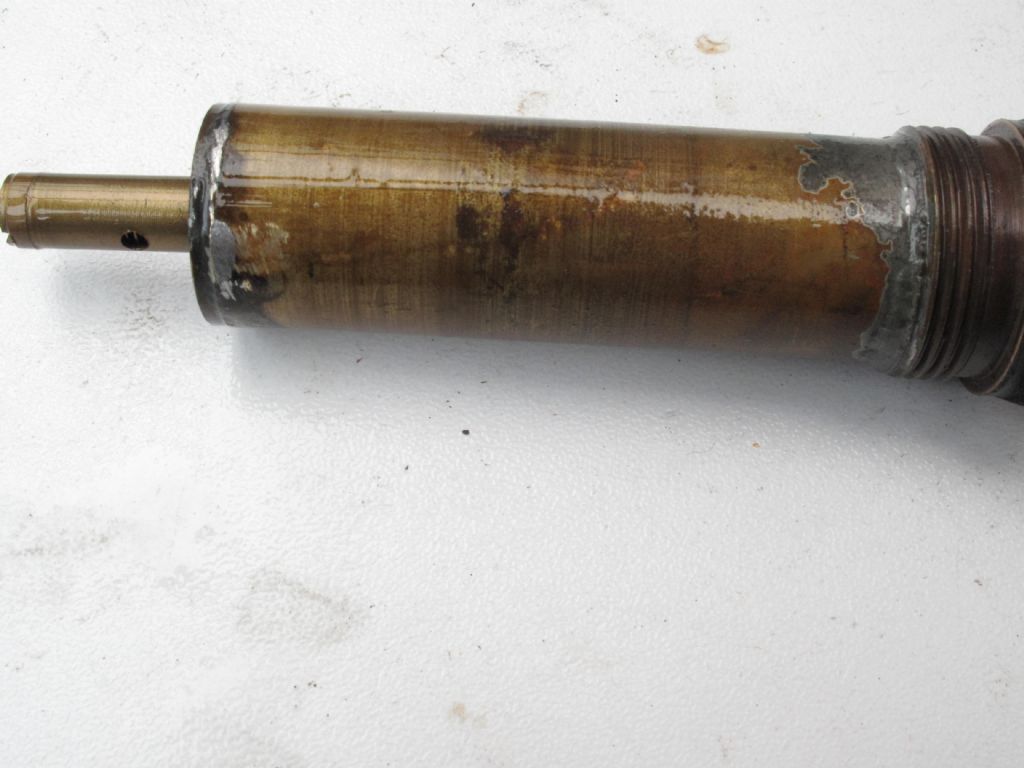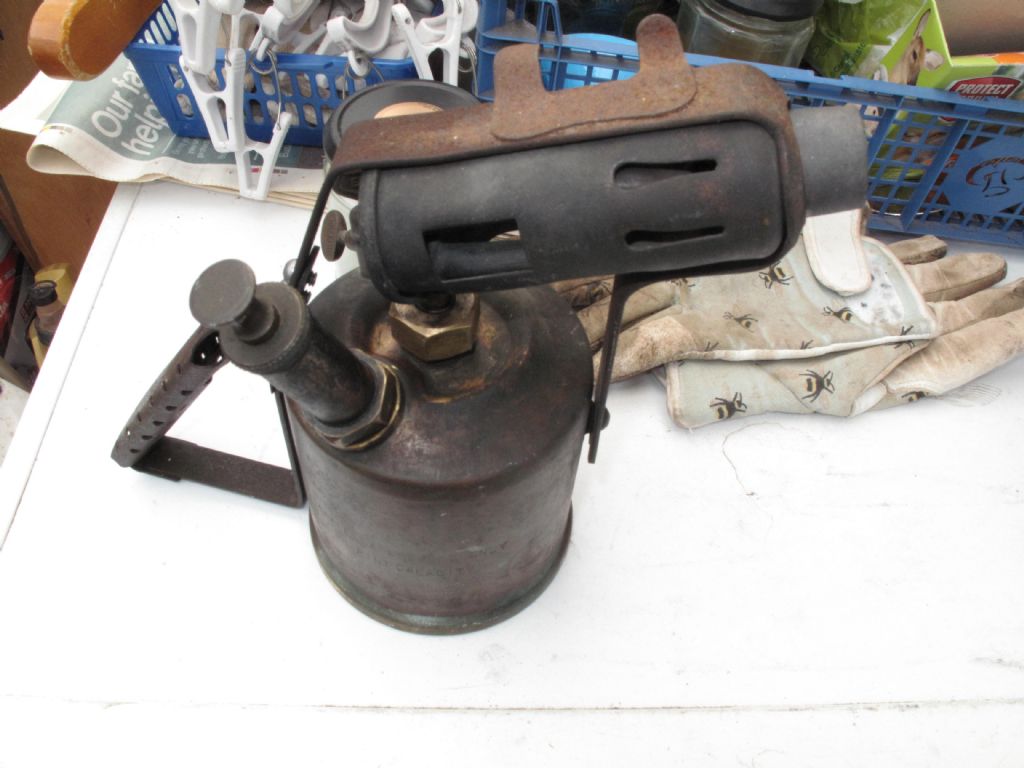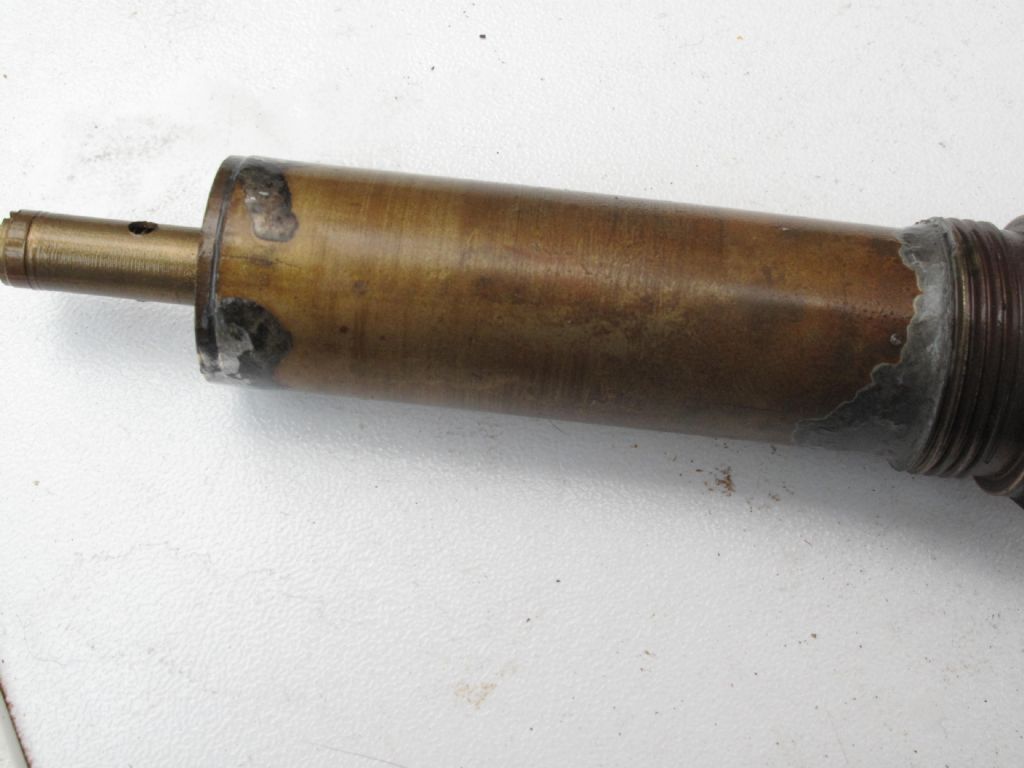The soldering you can see here – round both ends of the pump tube – is soft solder. The extra blobs at the left end are likely to be the result of the flux, which can allow the molten solder to spread about. This means that with a small heat supply it should be easy to remove the end cap, and the rest of the tube, in stages. First, though, remove the pump piston assembly and wash the whole tube to remove traces of old paraffin.
If you are not familiar with the 'tricks of the trade' here, a small propane blowlamp (as used in kitchens to scorch the tops of some puddings) should serve to melt the solder, and it will help if you have smeared the surface of the old solder with a paste flux (be sure that your flux is for soft soldering with lead solder).
As soon as the end cap comes loose from the tube, tap it firmly down on a wood block, and this will shake off most of the old solder, ready for putting it back together. The tube which is split can then be removed, and this should only need a brief extra splash of the flame, as it will still be fairly hot. It should be possible at this stage to clean up the offending end including the crack, and using more flux, resolder the end cap, filling the crack in the process. A patch should not be necessary, but if you need one, use very thin copper (easier to form to shape) and hold it in place with fine wire twisted round, as you will use the torch in one hand and the solder in the other. If resoldering is not possible measure the tube diameter and length to see if a replacement can be found. If not, it should be possible to get a new tube bent from a flat sheet and hard soldered, but finding the right tools or the right craftsman or -woman is not at all easy. Or even a tube turned from a solid brass bar.
Or, if you are lucky, you might find someone on the forum who would have a go at it for you (but don't hold your breath …)
Regards, Tim
Edited By Tim Stevens on 31/05/2023 16:04:10
Chris Gunn.









